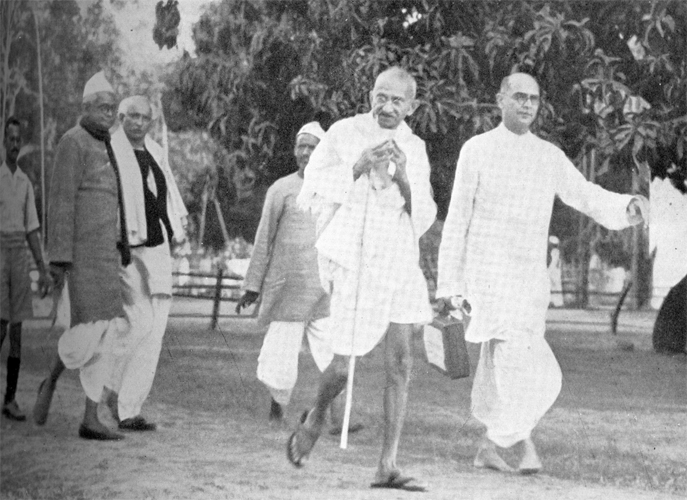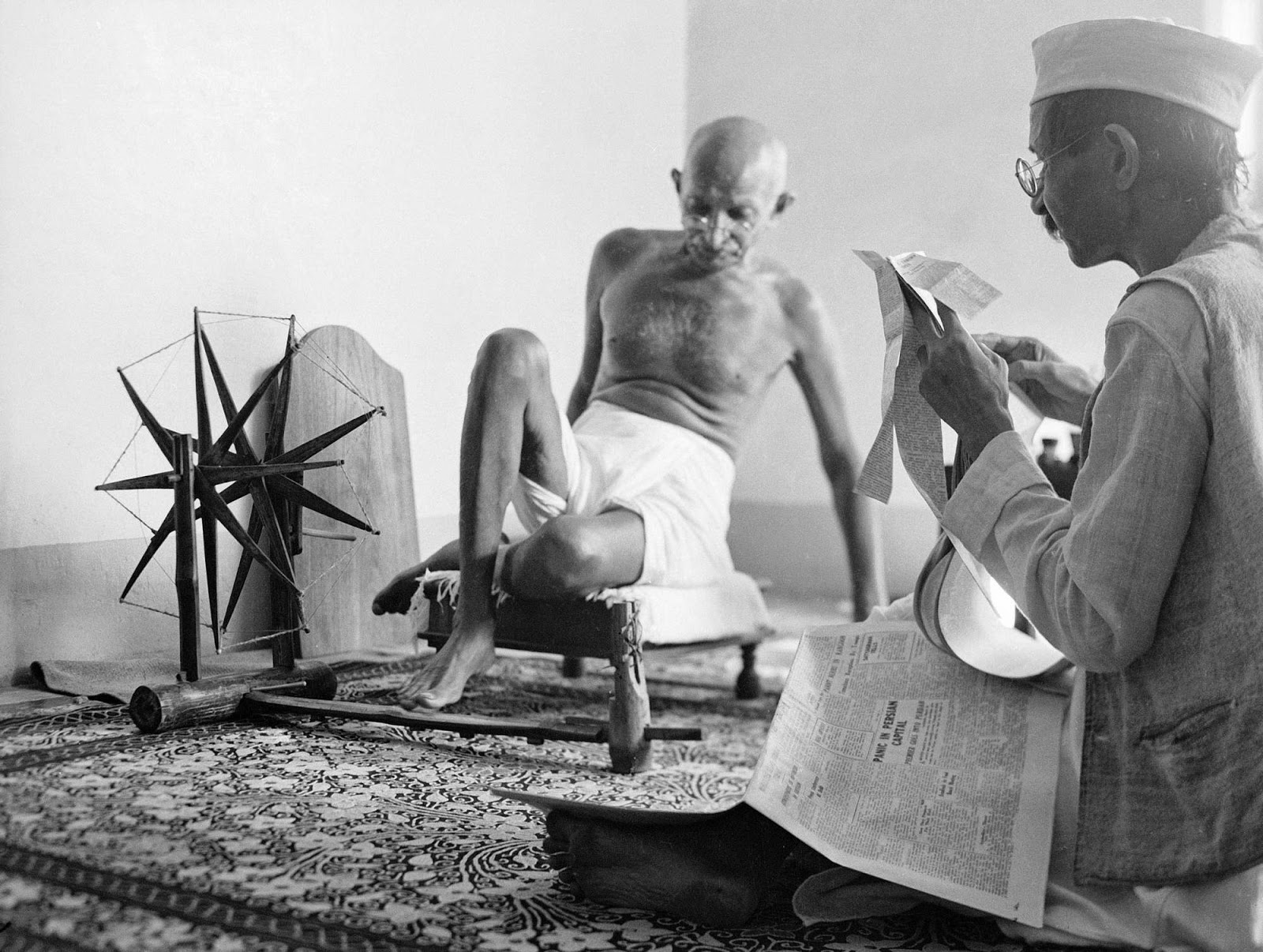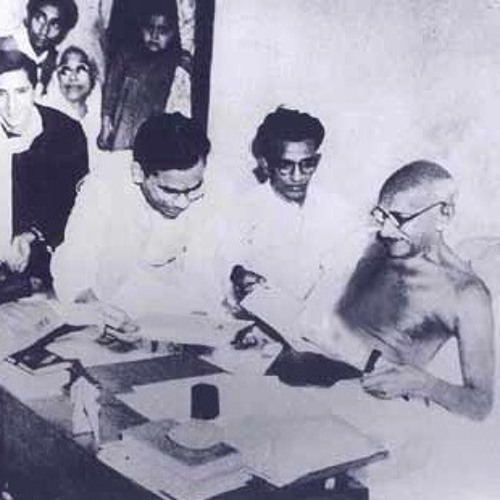

From Sonja Schlesin to Mahadev Desai, 'loyal' secretaries of Gandhi who ensured Mahatma remained at utmost efficiencyTo work with Gandhi on account of his ideals and then stay fiercely loyal to him was common to almost all the secretaries who worked for him |
- By Karthik Venkatesh
The name Sonja Schlesin does not ring a bell. But, her accomplishment, if we can call it that, was something of a first. Moscow-born Schlesin, whose family migrated to South Africa when she was about four, was Gandhi’s first secretary. In 1903, MK Gandhi (and that was how we was referred to then) enrolled as an attorney in the Supreme Court of the Transvaal in South Africa. He opened an office in Johannesburg and asked around for a clerical assistant. His architect friend, Herman Kallenbach, referred him to a young Jewish woman, Sonja Schlesin who had matriculated at the University of the Cape of Good Hope in 1903 at the age of 15. Gandhi was prepared to pay her up to £20 for her clerical work, but Schlesin was perfectly satisfied with £6. Her response to Gandhi’s offer of more than £6 was, “I am not here to draw a salary from you. I am here because I like to work with you and I like your ideals.” Schlesin worked with Gandhi for the rest of his South African stint and they continued to remain in touch even later. In 1924, when she asked for a reference, Gandhi had this to say about her: “I never once had reason to doubt her integrity or her ability. Indeed she did not work for the sake of pay but for the sake of the work itself which she loved. I could not wish for a better secretary.” To work with Gandhi on account of his ideals and then stay fiercely loyal to him, it appears, was common to almost all the secretaries who worked with the Mahatma. And given the demands of the job, it stands to reason that Gandhi was amazingly lucky in continuously finding such people to stand by his side. In an article written by Pyarelal Nayyar (himself a later secretary of Gandhi) on Mahadev Desai, the most well-known of Gandhi’s secretaries, he has this to say about the lot of Gandhi’s secretaries: “His secretary must be ready to perform the meanest task that may come his way with as much willingness, diligence, concentration and care as the biggest. The task may range from cooking, washing clothes, cleaning of latrines or tending the sick to running a big daily newspaper, answering awkward questions from none too friendly and persistent correspondents, reproducing from memory notes of an important conversations or interview or negotiating an interview with the Viceroy or his officials.” The article then went to add that “(T)he late Shri Desai acquitted himself equally creditably in each and all of them’. For 25 years, Desai stayed a step or two behind Gandhi, shepherding him through his appointments, recording his words and through his translation of Gandhi’s autobiography, even acting as ‘Gandhi’s Boswell.” Not too many people know that Mahatma Gandhi’s autobiography The Story of My Experiments with Truth was originally written in Gujarati. Published in weekly installments between 1925 and 1929 in Navajivan, the English translation of the work was largely carried out by Mahadev Desai, Gandhi’s secretary and it is owing to his translation capabilities that the book went out into the wide world and became an influential text. Follower extraordinaire
From The Fire and the Rose, a biography of Desai written by his son, Narayan, we learn that he was born in 1892 in Surat district. Post his matriculation in Gujarat, he moved to Bombay where he graduated with a BA and later also obtained a qualification in law. All along, Desai retained a love of literature and this prompted him to seek out Gandhi in 1915, when for some reason, he thought Gandhi could advise him on how to publish a book he had translated into Gujarati (John Morley’s On Compromise). It is not quite clear what happened to the translation, but Desai and Gandhi seemed to have hit it off and continued to meet regularly over the next couple of years before Desai decided to join Gandhi fulltime in 1917. The historian Rajmohan Gandhi observes, “Waking up before Gandhi in pre-dawn darkness, and going to sleep long after his Master, Desai lived Gandhi’s day thrice over — first in an attempt to anticipate it, next in spending it alongside Gandhi, and finally in recording it into his diary.” When Desai succumbed to a heart attack on 15 August 1942 at the Aga Khan Palace in Pune where he and Gandhi had been interred, Gandhi was devastated beyond belief and called out to him in agitation: “Mahadev! Mahadev!” When asked later why he had done so, Gandhi answered: “I felt that if Mahadev opened his eyes and looked at me, I would tell him to get up. He had never disobeyed me in his life. I was confident that if had he heard those words, he would have defied even death and got up.” Gandhi himself washed Desai’s body and he was cremated on the Palace’s grounds, where his samadhi lies today. Gandhi’s chronicler
Another of Gandhi’s secretaries who worked alongside Desai and later, assumed his position was Pyarelal Nayyar (1899 – 1982). Nayyar had done a BA from Government College, Lahore and left his MA studies when the Non-Co-operation movement was launched in 1921 and Gandhi exhorted students to give up their studies to devote a year’s service to the nation. Nayyar did not resume his studies when the movement was suspended, opting to serve alongside Gandhi. He accompanied Gandhi to London for the Round Table Conference in London in 1931. Besides secretarial work, Nayyar also edited Harijan and post Gandhi’s death in 1948, wrote a number of works on Gandhian philosophy and methods. Nayyar’s sister, Dr Sushila Nayyar was Gandhi’s personal physician. Companion in the dark daysIn 1946-47, Nirmal Kumar Bose walked with Gandhiji in the riot-afflicted villages of eastern Bengal. Kolkata-born Bose was an anthropologist by training and was a pioneer of sorts in establishing the discipline in India. He carried out pioneering studies and also wrote several anthropological works. Besides anthropology, Bose was also drawn to the Gandhian doctrine and had written an analytical work entitled Studies in Gandhism (1940) even before he worked with Gandhi. The Noakhali communal riots in eastern Bengal in October 1946 prompted Gandhi to visit the region the following month. He remained there for several weeks attempting to calm tensions. He visited several villages on foot and spoke to a wide variety of people. Bose was his companion throughout this journey. Bose later wrote glowingly of Gandhi’s attempts to foster peace in My Days with Gandhi (1953). The last one
On 4 May, 2021, V Kalyanam who was almost a hundred years old passed away in Chennai of age-related ailments. Kalyanam, who later worked with Edwina Mountbatten and Rajaji, was Gandhi’s last secretary. Born in Simla in 1922, Kalyanam, who hailed from Tamil Nadu, had been recruited to work with Gandhi by Devdas Gandhi, Gandhi’s youngest son. He first met the Mahatma in May 1944 in Mumbai. Kalyanam served for a considerable period in Sevagram, shadowing Gandhi when he was there and taking care of his correspondence and performing other secretarial duties. Kalyanam was right behind Gandhi when the Mahatma was assassinated on 30 January, 1948. In 2017, Kalyanam had even claimed that Gandhi did not say “Hey Ram” and died instantly, though he did later clarify that he had been misquoted. Between Desai, Nayyar, Bose and Kalyanam, Gandhi’s secretaries hailed from all four corners of the country. Loyal, patient and meticulous, they walked in his shadow, drawing little attention to themselves, but always ensuring that Gandhi remained at his efficient best. Courtesy: Firstpost.com, dt. 2.10.2021 |